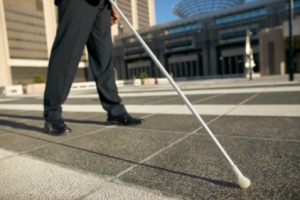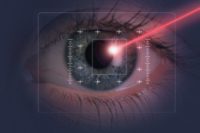 The term "blindness" can have many connotations and is difficult to define precisely. To many people, blindness refers to the complete loss of vision with no remaining perception of light.
The term "blindness" can have many connotations and is difficult to define precisely. To many people, blindness refers to the complete loss of vision with no remaining perception of light.
However, this ultimate form of complete blindness is rare. Far more people have permanent loss of some, but not all, of their eyesight. The severity of vision loss can vary widely and may result in equally varying degrees of functional impairment.
"Legal blindness" represents an artificial distinction and has little value for rehabilitation, but it is significant in that it determines eligibility for certain disability benefits from the federal government. In the United States, it is typically defined as visual acuity with best correction in the better eye worse than or equal to 20/200 or a visual field extent of less than 20 degrees in diameter. These overly simple criteria for visual impairment are far from comprehensive in defining the visual function deficits that can cause difficulties
for daily living tasks.
Vision impairment is defined as having 20/40 or worse vision in the better eye even with eyeglasses. People with the least degree of vision impairment may still face challenges in everyday life. For instance, people with vision worse than 20/40 cannot obtain an unrestricted driver's license in most states.
Almost everyone with blindness or vision impairment can benefit from vision rehabilitation, which can help make the most of whatever vision remains.
Unfortunately, blindness and vision impairment represent a significant burden, not only to those affected by sight loss, but to our national economy as well. Prevent Blindness America's 2007 study, The Economic Impact of Vision Problems: The Toll of Major Adult Eye Disorders, Visual Impairment and Blindness on the U.S. Economy estimates the costs associated with adult vision problems in the United States at $51.4 billion.
Blindness, as defined above, affects more than one million Americans age 40 and older. The visually impaired, including those who are blind, total more than 3.6 million older Americans. Blindness affects Blacks more frequently than Whites and Hispanics. Hispanics, however, have higher rates of vision impairment than other races. The prevalence of blindness and vision impairment increases rapidly in the later years, particularly after age 75.
Blindness: Total loss of vision is rare



